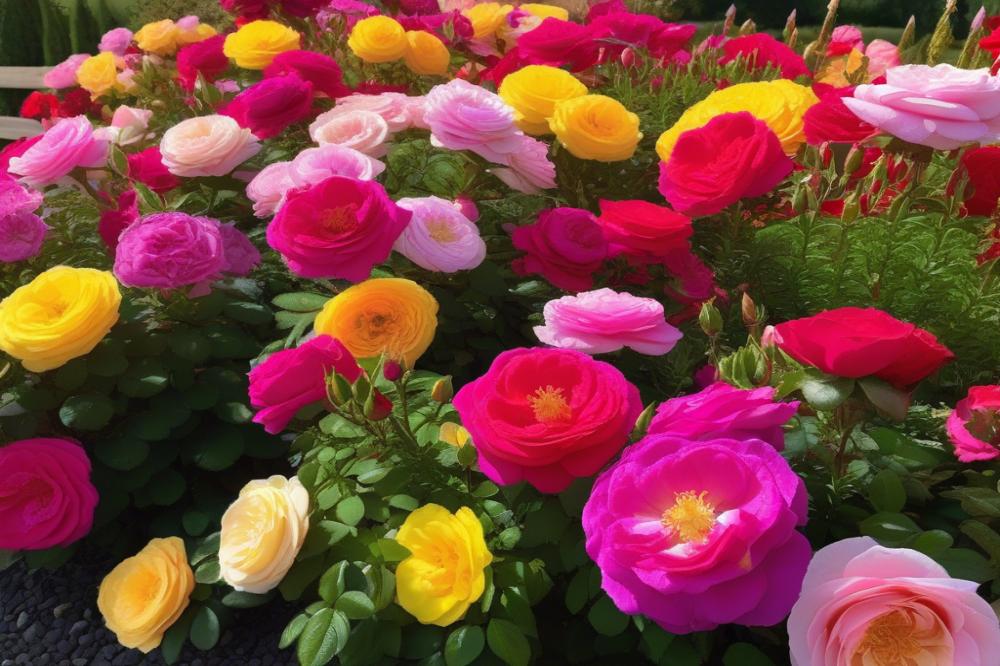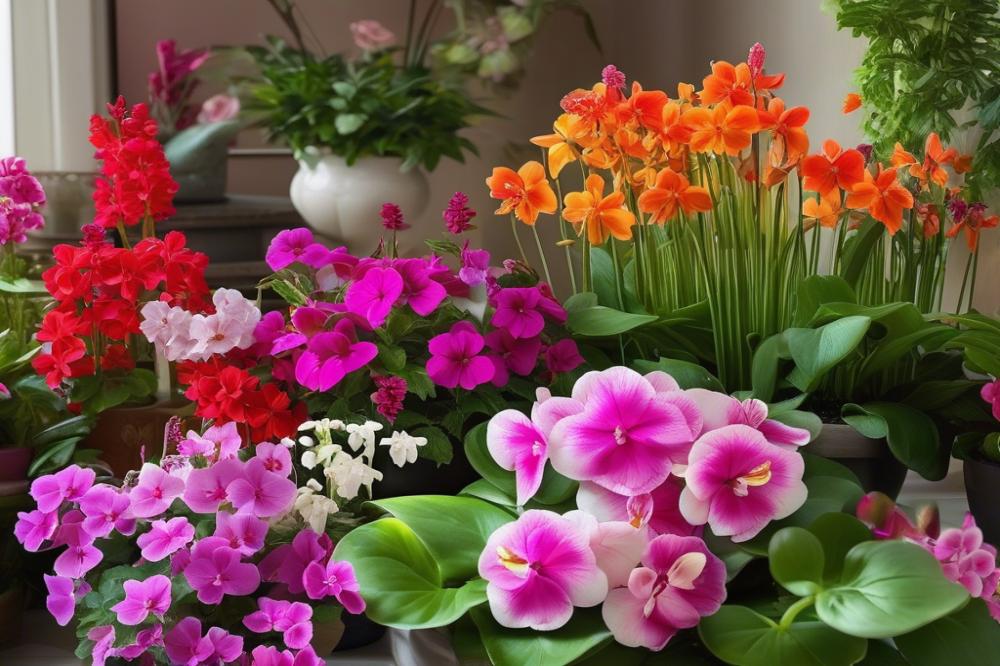Introduction to Growing and Caring for care-for-rugosa-roses”>Moss Roses
care-for-rugosa-roses”>Moss Roses are vibrant annual flowers that add charm to any garden. These plants, known for their colorful blooms, thrive in sunny environments and are perfect for flower gardening enthusiasts. Many people choose them for their unique aesthetics and low-maintenance nature.
growing moss roses is an excellent option for those who want beautiful flowers without excessive effort. They are drought-tolerant plants, making them suitable for regions that may not receive constant rainfall. By incorporating these hardy beauties into your garden, you can achieve a lively display while also conserving water.
Understanding the proper care for moss roses is crucial. They have specific soil needs and prefer to be planted in well-draining conditions. This attention to their environment helps foster robust growth. In addition, pest control is relatively straightforward, as these plants are less prone to infestations compared to other varieties.
Choosing to add these full sun plants can bring many benefits. The diverse colors and shapes provide visual interest throughout the growing season. Since they can also function alongside succulents and other drought-tolerant plants, you can create a beautiful and sustainable garden space. Overall, the joyful presence of moss roses can enhance your gardening experience.
Understanding Moss Roses

Description of Moss Roses and Their Characteristics
Moss roses, often referred to as Portulaca grandiflora, are captivating annual flowers known for their vibrant, fleshy leaves and ability to thrive in challenging conditions. This plant showcases succulent characteristics, making it ideal for garden enthusiasts who focus on low-maintenance flora. Colorful blooms appear in a range of hues, including pink, red, yellow, and white. These flowers typically open during the day and close at night, creating an engaging display. growing moss roses offers the advantage of both beauty and resilience.
Types of Moss Roses and Their Colors
Various types of moss roses can be found in gardens, each providing a splash of color. The most popular varieties include ‘Sunrise’, with bright yellow petals, and ‘Radiance’, which showcases deep pink blooms. Some hybrid options also exist, featuring unique mixtures of color. These plants contribute to flower gardening by adding texture and vibrancy. Whether grown in pots or beds, they provide a delightful focal point. Their array of colors enhances any landscape and attracts attention throughout the growing season.
Growing Zone and Climate Preferences
Moss roses thrive in growing zones hardiness from 2 to 11. They prefer full sun, making them a suitable choice for sunny gardens. These plants are drought-tolerant, which means they don’t require frequent watering. This quality makes them ideal for those who may forget to water regularly. Soil needs are quite basic; well-draining soil allows for optimal growth. Gardeners should avoid overly rich or heavy soils, which can lead to root rot. Pest control is usually minimal for these resilient plants, but occasional monitoring can prevent any issues. Climate plays a role, as they flourish best in warm temperatures.
Growing Moss Roses

Ideal Planting Conditions
Moss roses thrive in full sun. They prefer well-drained soil that allows water to escape. Good drainage is crucial for these plants as waterlogged roots can lead to rot. In your garden, consider mixing in sand or gravel to enhance soil needs. Bright colors and vibrant blooms emerge when these conditions are met. Selecting the right spot can lead to a spectacular display of annual flowers.
Guidelines for Planting
When planting, choose a space with ample sunlight. This plant loves warmth and light. Dig holes that are slightly larger than the root ball of each plant. Place the moss rose in its new home and backfill the hole with soil. It’s important to space the plants at least 12 inches apart. This spacing allows for air circulation and healthy growth.
Watering Requirements and Drought Tolerance
Watering should be done carefully. Moss roses are drought-tolerant plants that do not need excessive moisture. Water them deeply but infrequently, allowing the soil to dry out between sessions. Light rain may provide enough moisture, so avoid overwatering. This plant can withstand dry conditions, making it perfect for low-maintenance gardens.
Choosing the Right Location
Analyzing your garden space is key. Look for areas that receive at least six hours of direct sunlight daily. Full sun plants, like these, can bring life to otherwise dull spots. Avoid shady areas where they are less likely to thrive. Consider nearby succulents and their needs; they often share similar conditions. Pest control may be necessary, but these resilient flowers can typically fend off common garden pests. The right location and care can produce colorful blooms that brighten your outdoor space.
Plant Care for Moss Roses

Soil Needs for Healthy Growth
Growing moss roses thrives best in well-draining soil. A sandy or loamy mix allows excess moisture to escape, preventing root rot. Adding organic matter can enhance soil quality. Keep the pH between 6.0 and 7.0 for optimal growth. These plants are quite adaptable but avoid heavy clay soils that retain too much water.
Fertilization Practices for Vibrant Blooms
Regular fertilization boosts flower production. Use a balanced fertilizer formulated for annual flowers. Applying it every four to six weeks during the growing season can promote vibrant blooms. Always follow the package instructions to avoid over-fertilization. Too much nitrogen may lead to lush foliage at the expense of flowers.
Pruning Moss Roses: Timing and Techniques
Pruning is essential for maintaining health and aesthetics. Trim dead or wilted flowers regularly to encourage new growth and prolong blooming. Late spring is a great time to prune back any leggy stems. Use clean, sharp tools to make precise cuts. This helps reduce the risk of disease and keeps plants looking tidy.
Mulching Benefits for Moisture Retention and Weed Control
Applying mulch around the base of plants provides numerous advantages. It retains moisture, which supports drought-tolerant plants, especially during hot summers. A layer of mulch also suppresses weeds, reducing competition for nutrients. Organic materials, like wood chips or straw, will break down over time, further enriching the soil as they decompose.
Pest Control and Troubleshooting

When growing moss roses, it’s important to be aware of common pests that can affect their health. Aphids, spider mites, and thrips are a few of the most frequent culprits. These insects can cause damage by sucking the sap from plants. Signs of their presence may include yellowing leaves or webbing on the foliage.
Natural pest control options are often the best choice for the environment. Insecticidal soap can effectively eliminate pests without harming beneficial insects. Spraying neem oil on affected plants is another organic method. This method disrupts the life cycle of pests, making it harder for them to return. Introducing ladybugs to your garden can also help, as they feed on aphids and other insects.
If you prefer chemical options, there are several insecticides available. Always read the product labels for directions and safety precautions. Applying these during the early morning or late evening minimizes harm to pollinators and beneficial insects. Ensuring to spray directly onto the pests will enhance effectiveness.
Recognizing and Addressing Common Problems
Aside from pests, various issues may arise when caring for these drought-tolerant plants. Overwatering can lead to root rot. On the other hand, underwatering may cause wilting. Check the soil moisture before changing your watering routine. Good soil needs to drain well to prevent these problems.
Another challenge involves diseases that could affect moss roses. Fungal infections may appear as black spots on the leaves. Using a fungicide can help combat these issues. Additionally, ensuring proper air circulation around plants is key. This simple practice can prevent many fungal problems.
Monitor your plants regularly. This helps catch any signs of trouble early. Pay close attention to the leaves and blooms. If you notice discoloration or a decrease in flowering, investigate further. Adjusting care routines, such as light exposure and watering, might be necessary.
All in all, these methods will help you maintain a healthy garden of colorful blooms. Keeping watch over your plants promotes a vibrant flower gardening experience. With the right pest control techniques, you can enjoy your yard full of thriving annual flowers and succulents.
Moss Roses in Flower Gardening
Incorporating these colorful blooms into your garden can create a vibrant display. Mixing them with succulents adds texture and diversity to your flower beds. Both thrive well in similar conditions, such as full sun. Consider placing drought-tolerant plants together for a striking arrangement that requires less water. Pairing moss roses with low-growing annual flowers also offers bursts of color throughout the season.
Designing a Colorful Garden with Annual Flowers
When designing your flower garden, choose annual flowers that complement the vibrant hues of your moss roses. Bright shades like reds, yellows, and pinks work well together. Grouping plants with different bloom times creates continuous color, which enhances visual appeal. Planning your layout in advance helps establish an eye-catching design. Don’t overlook the height of each plant when designing; taller flowers can provide a backdrop for shorter ones.
Seasonal Care Tips and Maintaining Blooms
Plant care is essential to enjoying healthy, blooming plants. Water moss roses deeply but infrequently, allowing the soil to dry out between watering. They prefer well-drained soil, which prevents roots from becoming waterlogged. Fertilizing during the growing season promotes robust growth and more blooms. Monitor for pests regularly and apply appropriate treatments swiftly to avoid damage.
The changing seasons require different approaches to maintenance. In the cooler months, check for any lingering foliage and remove dead or damaged leaves. This practice helps prevent pests and diseases. Additionally, as summer arrives, ensure your garden is mulched to retain moisture. This will keep your plant roots cool and hydrated, especially during hot days.
Final Thoughts on Growing and Caring for Moss Roses
Moss roses hold an important place in many gardens. Their vibrant colors and ability to thrive in various conditions make them a fantastic choice for both novice and experienced gardeners. A well-planned garden incorporating these flowers can bring life and joy to any outdoor space.
Caring for these plants is not overly complicated. Regular watering, proper sunlight, and occasional deadheading will go a long way. Understanding their needs can lead to flourishing blooms that brighten your garden. When considering planting, remember that these flowers are drought-tolerant. This quality makes them perfect for areas with limited water supply.
Embracing the beauty of moss roses can truly enhance your gardening experience. Observing their growth and vibrant colors can be quite rewarding. If you are new to gardening, starting with these flowers might inspire further exploration into other plant varieties. The satisfaction of nurturing them and witnessing their blooms is immense.
Ultimately, digging into the world of growing moss roses can provide both a creative outlet and a sense of accomplishment. Encourage friends and family to join you in this gardening adventure. Together, you can share tips, ideas, and an appreciation for these delightful plants. Add them to your planting list and watch your garden transform.



